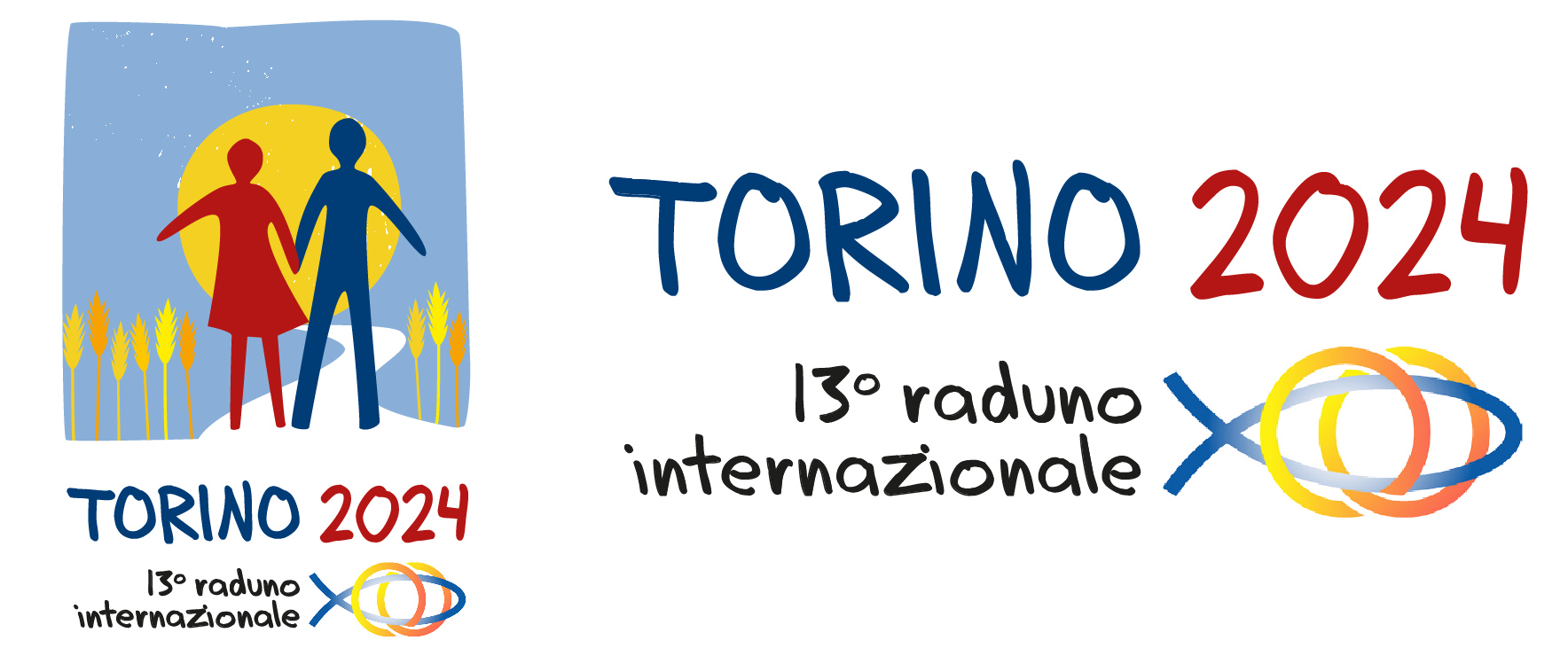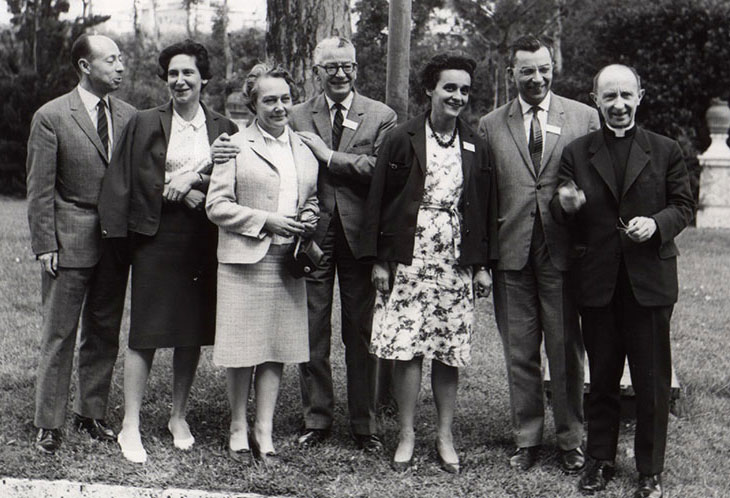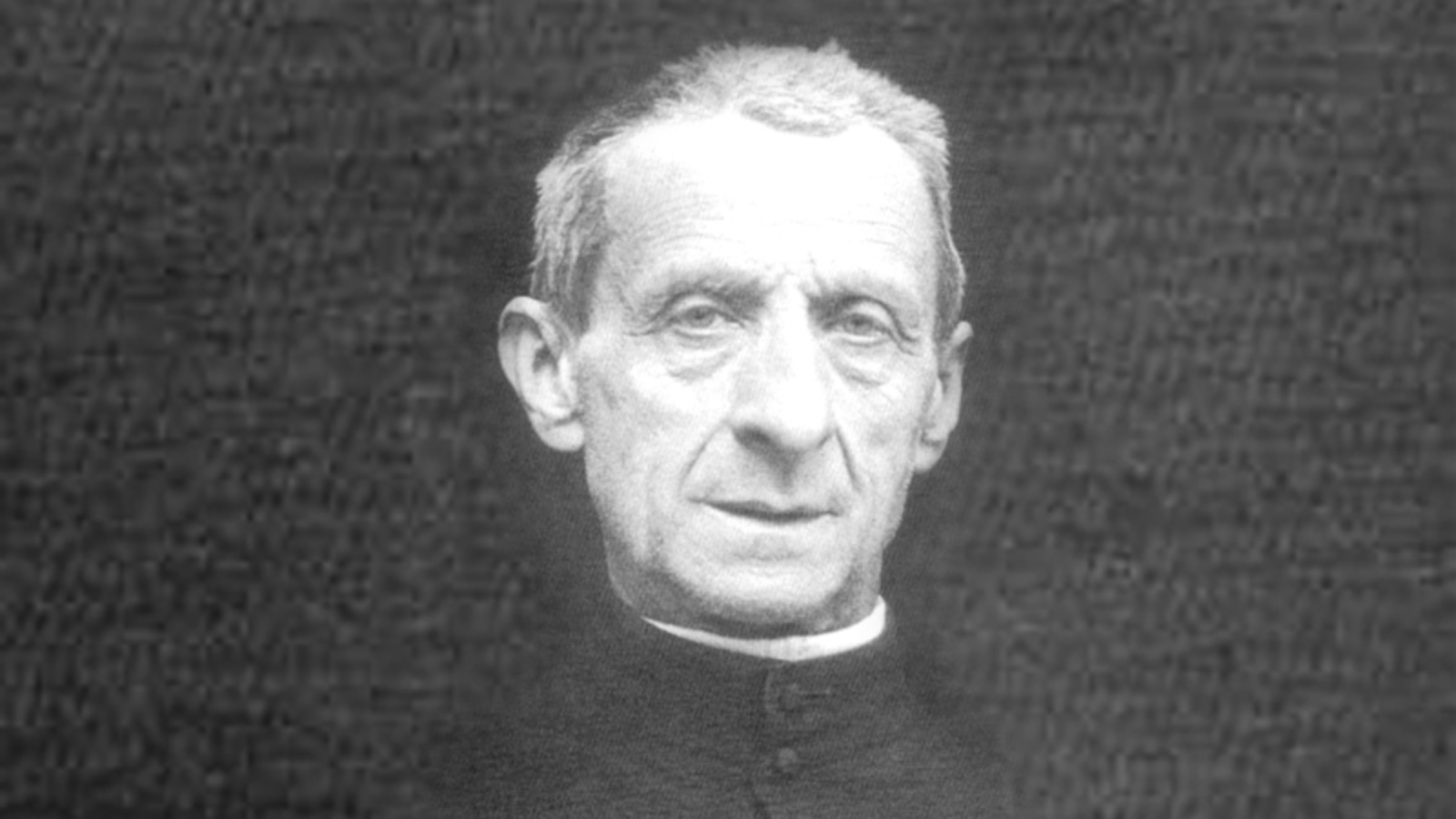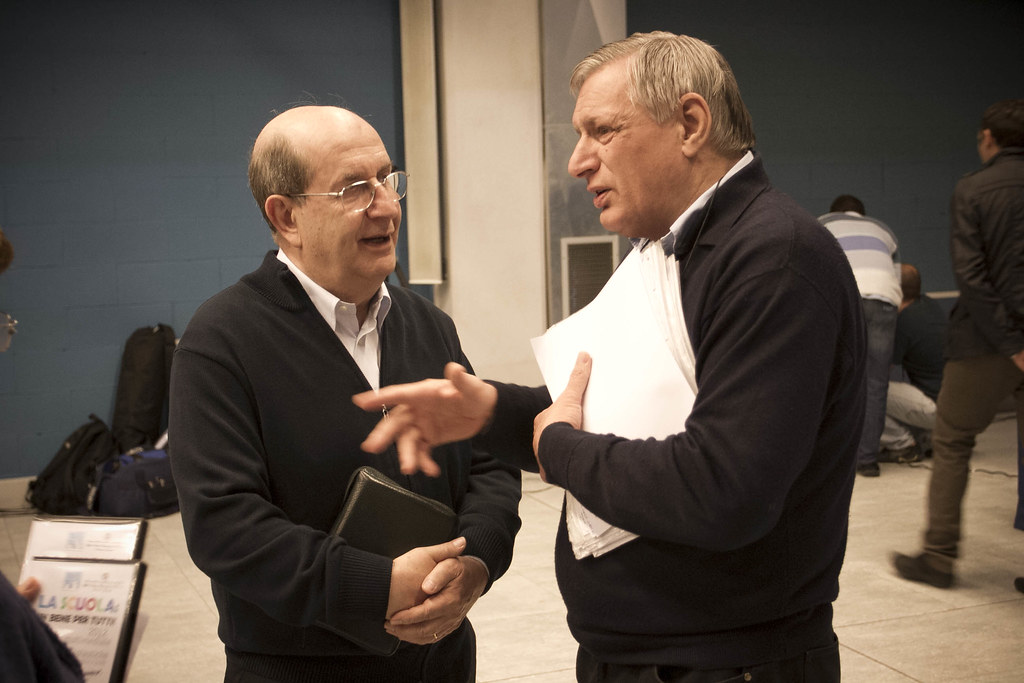How to represent the sudden recognition (their eyes opened and they recognized him) after the initial misrecognition (their eyes were unable to recognize him)? How to hold together the presence and absence (but he disappeared from their sight) that is already looming as the reality that will be the only one from here on?
The scene portrayed is seemingly simple and bare, immersed largely in darkness.
Christ appears in profile and in shadow, but he recoils as if in an effort to break bread. His figure is recognizable from the features of classical representations: he is the Risen One with a human face, but his physical presence lasts only an instant.
The disciple in front makes the opposite movement, moving away in turn. He has a startled reaction, which the light exhibits without caution, showing his resigned appearance and unpleasant physiognomy. His surprise has none of the stereotypical features.
The second disciple is barely visible. But one at least glimpses the fallen stool and his kneeling figure, thrown at Jesus’ feet.
The room in the background reveals a woman against the light, caught up in domestic work, yet leaning in the same direction as Christ; so too is her shadowy image.
The poverty of the whole scene seems to refer back to birth: solemnity coexists with everydayness. It is the challenge to bring out the unbelievable in a familiar atmosphere.
Most is suggested, because what is on stage is the unrepresentable. And you who observe, what else do you see?
Maria Nisi
Writer, lecturer in ‘Literature and Religion’ at Issr in Turin and religion teacher at the Gobetti high school in Turin
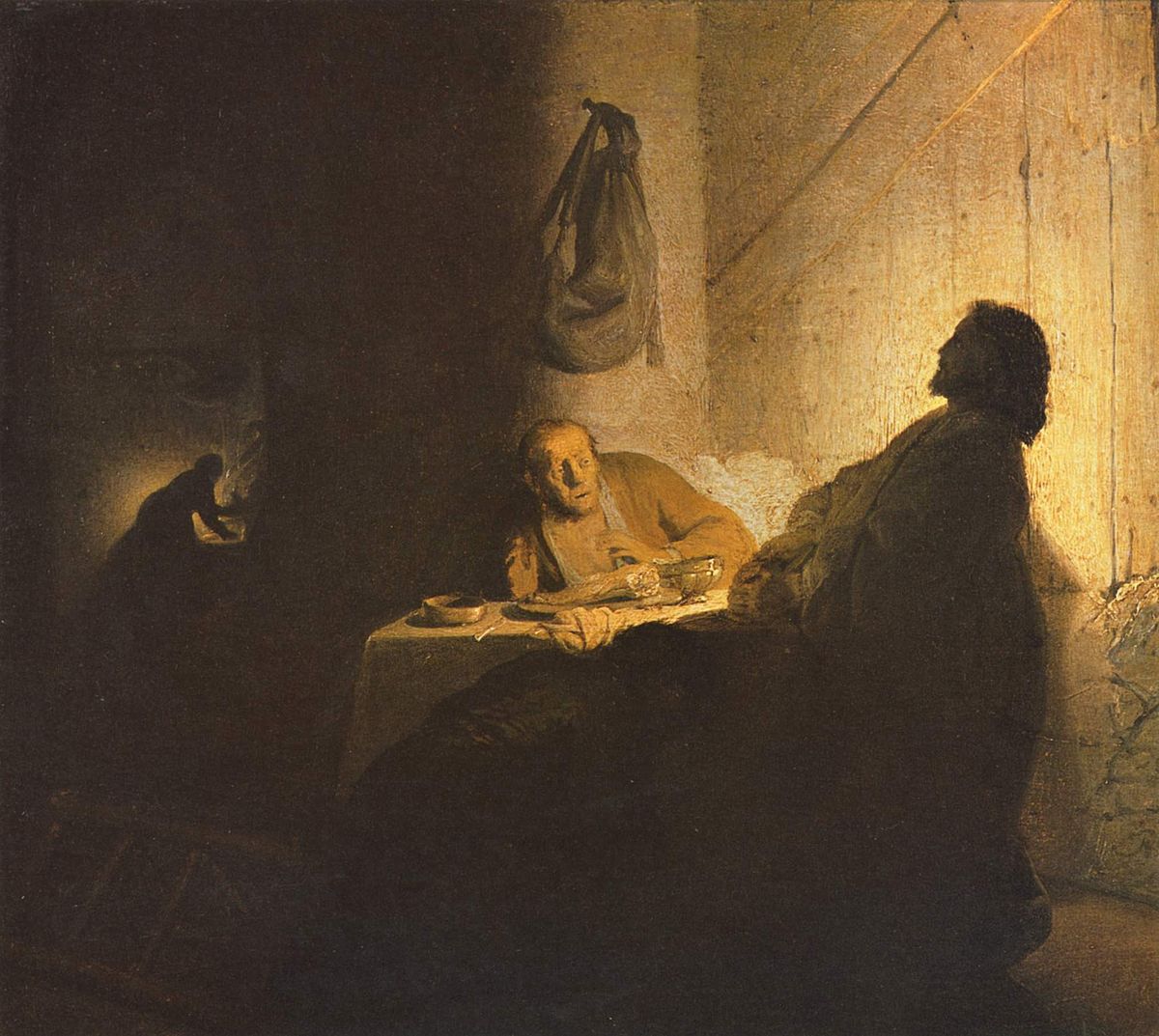
Rembrandt “The Pilgrims at Emmaus” 1628. Jacquemart-André Museum, Paris
